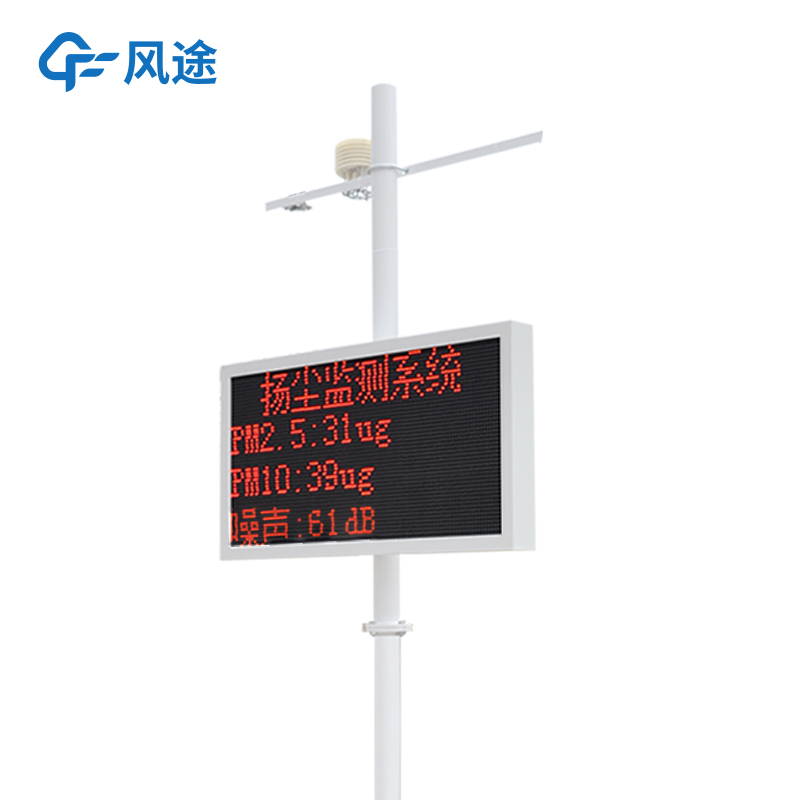Shandong Fengtu IOT Technology Co., Ltd
Sales Manager:Ms. Emily Wang
Cel,Whatsapp,Wechat:+86 15898932201
Email:info@fengtutec.com
Add:No. 155 Optoelectronic Industry Accelerator, Gaoxin District, Weifang, Shandong, China

Sales Manager:Ms. Emily Wang
Cel,Whatsapp,Wechat:+86 15898932201
Email:info@fengtutec.com
Add:No. 155 Optoelectronic Industry Accelerator, Gaoxin District, Weifang, Shandong, China
time:2025-02-20 10:16:14 source:Weather Station viewed:114 time
With the continuous advancement of urban construction, dust pollution at construction sites has become a key focus of environmental governance. Dust Monitoring Equipment enables all - round and real - time monitoring of construction site dust, providing strong data support and decision - making basis for dust pollution control.
Dust Monitoring Equipment mainly consists of particulate matter sensors, which can accurately detect the concentrations of particulate matter with different particle sizes such as PM2.5 and PM10; meteorological sensors, which are used to collect meteorological data such as wind speed, wind direction, temperature, and humidity. This is because meteorological conditions have a significant impact on the diffusion and spread of dust. For example, in windy weather, dust is more likely to spread to surrounding areas. There are also noise sensors to monitor the noise generated by construction site operations. Noise and dust are often common pollution problems at construction sites.
The data collection and transmission unit is responsible for collecting data from various sensors and, through wireless transmission technologies such as 4G and NB - IoT, transmitting the data in real - time to the monitoring center. It is like an information bridge, ensuring that the on - site monitoring data can be received and processed in a timely and accurate manner.
The monitoring center platform is the core of the entire system, equipped with functions such as data storage, analysis, display, and early warning. Staff can intuitively view the real - time data and historical change trends of construction site dust on the platform, which is convenient for data analysis and management decision - making.
The monitoring equipment collects the dust, meteorological and other data on the construction site in real - time. The data collection and transmission unit packages and sends these data to the monitoring center platform. The platform uses professional algorithms to analyze and process the data. When the monitored dust concentration exceeds the preset threshold, the system will immediately trigger the early warning mechanism and notify the relevant responsible persons in a timely manner through methods such as text messages and APP push notifications, so that effective dust reduction measures can be taken.
Through real - time monitoring and timely early warning, construction units can quickly take measures such as sprinkling water to reduce dust and covering materials, effectively reducing construction site dust pollution, improving the air quality in the surrounding areas, and reducing complaints and disputes caused by dust pollution.

With the popularization of transportation, vehicle safety has gradually become a focus of social concern. Low visibility is one of the main causes of road traffic accidents. In order to improve driving safety, vehicle-mounted mobile visibility meters have come into being. In this article, we will el...
Air quality has a far-reaching impact on human health and the ecological environment. Along with the rapid progress of industrialisation and urbanisation, the problem of air pollution has become increasingly serious. This situation not only poses a threat to people's health, but also has a serio...
Piezoelectric rain sensors use the impact measurement principle to measure the weight of individual raindrops and thus calculate the amount of rainfall. The raindrops are influenced by the weight of the raindrops and air resistance during their fall. When they reach the ground, the velocity is const...
sensor industrial Equipment used to detect, measure and monitor various physical characteristics in industrial environments, detect quantity changes and convert them into output signals. Such as temperature, pressure, etc....